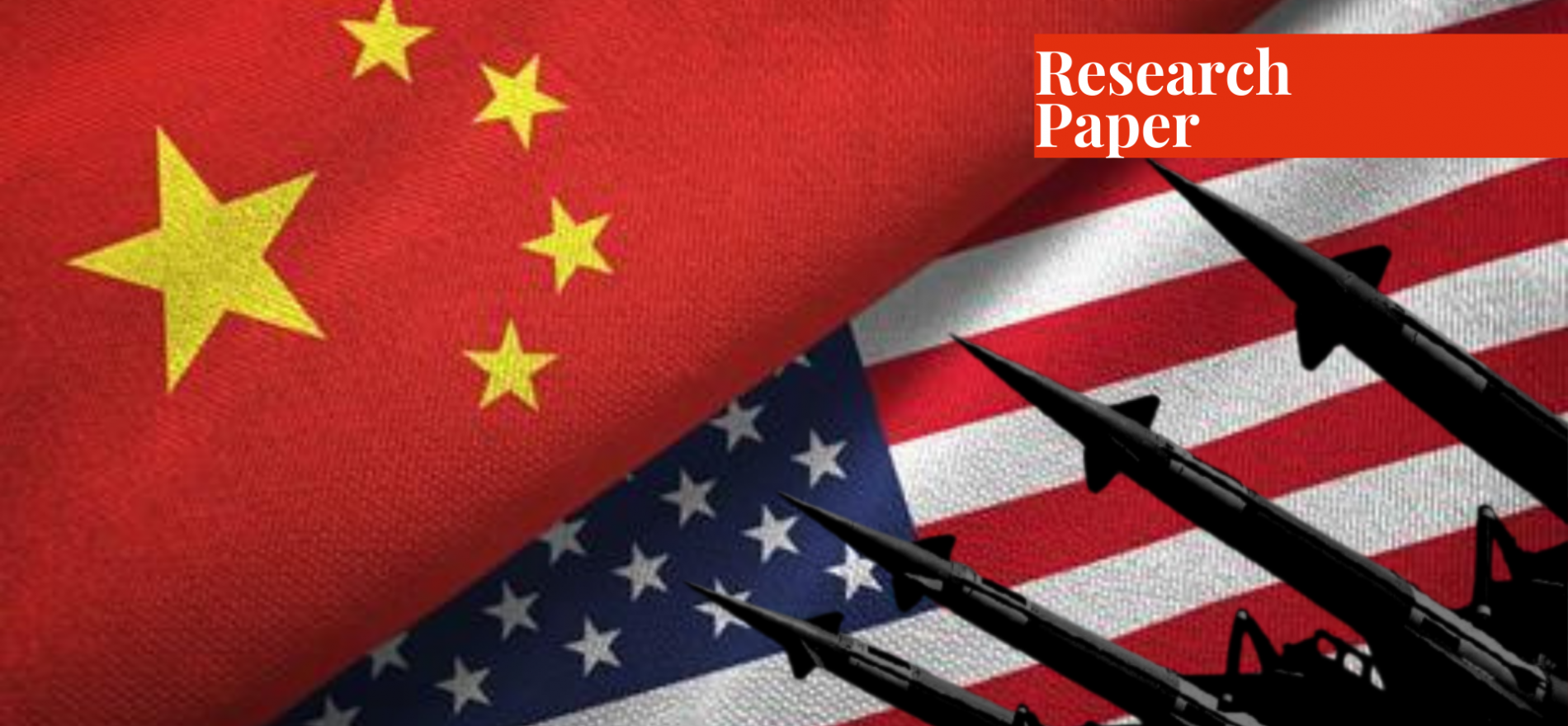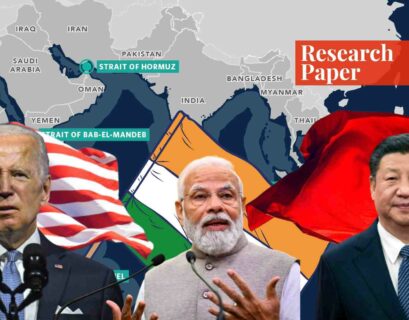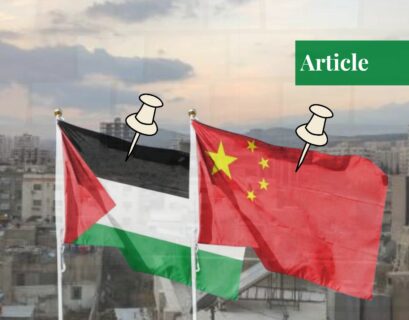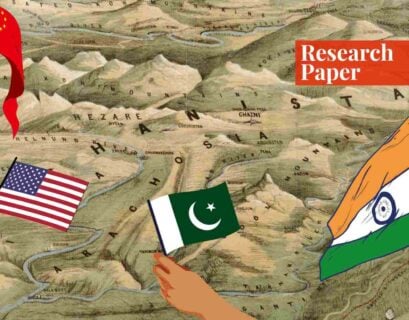Sidra Nasheen has a bachelor's in International Relations from the University of Management and Technology. She can be reached at [email protected]
Abstract
In the battle between capitalism and communism, the latter is making grounds to subdue the former. The main aim of this paper is to evaluate the purpose and the ways of the US policy of containment against its great rival, China. The US considers the rise of China as the biggest threat to its dominance in the international system.
It is quite evident that China is the only state that has the potential to cripple the status of America. It is unstoppable in its economic growth, military expansion, diplomatic ties, technological advancement, and win-win cooperation with regional powers, particularly through its Belt Road Initiative (BRI), which makes it a bigwig in the global community. However, to limit the growing Chinese influence, the US has adopted various ways.
US containment policy in the Asian region poses a big challenge to the renowned rival power. The US is practicing a hegemonic approach to toppling the position of China, particularly in South Asia, the Middle East, and the South China Sea. Many other contributing factors of the US policy of containment include the US-India Nexus, Abraham Accords, and the US-China trade war.
Introduction
“The Future of Politics will be decided in Asia and the United States will be right at the center of the action” (Clinton, 2011). The South Asian region is entangled in several external and internal challenges. The main challenge to this populous region is security and peace; to maintain peace there is a dire need for the political leadership in South Asia to focus on the security issues of this region. Some major internal problems of this region include corruption, poverty, instability, sectarian violence, underdevelopment, and terrorism, etc (Kai, 2014).
When we come to external challenges, we can say that external big powers are the cause of the dilemma in South Asia due to their continuous involvement in various affairs of this region. Especially, when it comes to the Sino-US security policies and their three main pillars—trade, security, and human rights. Both these states are rivals with security interests in the South Asian region while being partners in trade at the same time (Sempa, 2019).
For the containment of China, the United States has developed a policy of “Rebalancing” or “Pivot to Asia”. Since the United States considers China the biggest competitor due to its increasing economic growth and its growing influence in the Asian region, it introduced this policy of containment to cut Chinese hegemonic patterns in the region. For this purpose, the United States uses both hard power and soft power in its strategies and foreign policy for the containment of China (Wei, 2020).
Whereas China, as a main rival of the US, also opted for a two-pronged policy i.e building a strong military and alliances, and in regard to soft power, strengthening its trade networks, diplomatic ties, various frameworks, and a project like the Belt Road Initiative (BRI). Furthermore, China has a sharp eye on the global structure in which the United States appears as a hegemon; China intends to alter this structure through multiple frameworks.
The US-India Nexus
China’s speedy and multifaceted rise is pushing the United States to implement its “Pivot to Asia” policy for China’s containment. For this reason, the US has been compelled to create a strategic ally in the Asian region (Ashraf, 2020). In this regard, the US chose India as its major strategic partner and India is being prepared to contribute to this task.
The current US-India strategic partnership is defined by four foundational agreements signed between these two states. These agreements include the General Security of Military Information Agreement (GSOMIA), Logistic Exchange Memorandum of Agreement (LEMOA), The Communications Compatibility and Security Agreement (COMCASA), and the Basic Exchange and Coordination Agreement (BECA) (Bhatia, 2020).
All the above-mentioned agreements were signed for different purposes like information sharing between both states, creating the basis for arms sales from the United Stated to India for the future, sharing military information, and aerospace and sensor data, along with everything that comes with it. The United States tempted India to help it with the onerous task of containing China.
The United States has control over India because all the above-mentioned agreements except the LEMOA are one-way transactions from the United States to India. Due to US-India strategic alliance, the South Asian region is being polarized and this has a massive impact on China-Pakistan relations (Nawaz).
South China Sea Dispute and the U.S Strategy
There is no doubt that the military rivalry and frictions between the United States and China are in hot waters in the South China Sea (Budrich, 2019). Both competing states made tit-for-tat strategies and have operational confrontations in the sea. The U.S is trying to topple the growing Chinese maritime power by playing South China Sea card. Both rivals have reasons for the existence and expansion of their militaries in the Asia Pacific.
As China is the biggest seaboard country in the South China Sea, it has a major interest in the sea lanes of communication, jurisdictional waters, and territorial security. In this region, several military platforms are operational because of the modernization of China’s military. Being the biggest rival of China, the United States keeps a close eye on maritime status, navigational freedom, and its commitments to regional states regarding security (Poling, 2020).
The U.S has been successful in maintaining its dominance in this region due to its control over the most powerful military since the end of World War ll. The maritime rise of Chine in the South China Sea is unacceptable for the U.S, which is why the military of the former state is unparalleled in the area.
One of the main reasons behind the South China Sea dispute between China and the United States is the desire to have control of the natural resources of the region. Chances of resolution are on thin ice due to the US strategy in the South China Sea. The United States pays great attention to Asia because of the increasing economic and military power of China. The US policymakers made policies intended to shift the US interests in the South China Sea and to sabotage China’s influence in the region.
China’s status of regional and global power is a threat to the US hegemony. Due to this, America is continuously improving its containment policy against China by making strategies with geopolitical and geostrategic pillars in mind. By containing China geopolitically, the US dwindles the status of China as a regional power and by containing China geostrategically, the US hegemony is maintained (SAHA, 2020).
US-China Rivalry and the Middle East
The great rivalry between China and United States would alter the shape of Middle Eastern affairs. The geopolitical and economic patterns will change in the Middle East due to the involvement of these two great powers. Over the last decade, China’s involvement in Middle Eastern affairs has been widened and deep-rooted (Singh, 2020).
The Chinese Belt and Road Initiative (BRI) acts as a cornerstone for China’s growing importance in the Middle East by strengthening investment and commercial ties. China’s interests in this region are determined by its prime need for energy imports. It is the biggest trading partner of various states in the Middle East due to the large figure of energy imports.
Moreover, China, through BRI, also appears as a tremendous investor in infrastructure and construction. Chinese diplomacy is the fundamental factor in the increasing economic activity in the Middle East. During the last decade, many partnership agreements have been signed between China and 13 Middle Eastern states for different purposes (Alterman, 2011).
Contrary to the Middle East, America’s focus on its new global rivalry with Beijing has dramatically elevated in recent years. The trade war between the Trump administration and Beijing and the war of words regarding Beijing’s control of the COVID-19 pandemic are contributing factors to this approach. Irrespective of the leading party in the US, the probability of growing tensions between these two global powers is high in the future (Huggard, 2020).
The secured flow of energy from the Middle East is a shared interest of both powers. The incentive of the United States to stay in the region is the thriving interests of China in the Middle East. US policymakers, when devising a policy concerning the Middle East, might be focusing on how to balance their own vigilance in the affairs of the Middle East while keeping in view the containment of China’s increasing power in the region.
Great pressure would be placed on the Middle Eastern states—particularly those that have been traditional partners of the US—if the Sino-US rivalry leads both states to more involvement in the security affairs of the region (Mehboob, 2018). Moreover, the United States has also used Abraham Accords as a tool to maintain its hegemony in the Middle East, and as a part of its policy of containment against China.
The Abraham Accords
Historic deals were concluded by Israel with the United Arab Emirates and Bahrain to create a path for official diplomatic relations on September 15, 2020. These deals are also intended to normalize ties with the White House (Goldberg, 2020). The Abraham Accords are not merely a normalization pact, they have been used by the US to target its rivals like China and Iran. Some leftists of the United States gave a little weight to this agreement saying that this pact is not actually a peace deal because Israel has not been engaged in a war with any of the two Gulf Arab states.
This deal goes beyond the regional agreement to satisfy the political goals of the USA. Behind the curtain, the US used this pact for its own interests, which include the US’ desire to maintain its historic role in the region to determine the balance of power, the containment of Chinese influence, isolation of Iran, and selling several weapons, etc. (Adam, 2020).
When we see it from the broader lens of realism, this American-backed deal is nothing but a part of the US strategy to manage its long-term plan of protecting “Pax Americana” and to elevate its influence in a region where Beijing is interested. As Iran has strong and close ties with China and Russia it is detrimental for the US to achieve its political goals in the region.
So, to accomplish its strategy of containment towards China and Russia, and to isolate Iran, the US used the Abraham Accords to establish the Middle Eastern region as a historic zone of US hegemony and power ever since the Truman Doctrine—which developed the northern tier as a “buffer zone” against the USSR. Needless to say, currently, the same style of policy as the northern tier is being used by the US against China.
Beijing is conscious of the grand strategy of the US and has a sense that the Abraham Accords could contribute to US containment policy towards it in the Middle East. The United States can pressurize its allies in the region to rethink their partnership with China regarding BRI. Although Beijing has cordially accepted the peace initiative, few Chinese political thinkers bother with how this pact can influence the dynamics of the Middle East, particularly the Palestine issue.
This agreement can split the Arab countries and promote radicalism by Hamas (Sehgal, 2020). The militarization of the Middle East is one of the essential goals of the USA. Hence, the concluding hanging arms deal between UAE and the US is one of the products of the Abraham Accords. The US decided to sell F-35 fighter jets, EA-18G Growler jets, and Reaper drones to the UAE.
The Premier of Israel, Benjamin Netanyahu, was not in the favor of this deal at first. However, after signing the peace deal with Israel, the UAE expects that there will no longer be any obstruction from Israel in the arms deal. Furthermore, Israel and UAE are now working to create a spy base on the Yemeni island of Socotra for intelligence gathering to monitor China, Iran, and Pakistan (Widakuswara, 2020).
The US intended to urge other Arab countries to join the Abraham Accords by selling weapons to these states at a low cost. If it were to happen, it may result in a new arms race in the region. While this arms race will be beneficial for the manufacturers of America, it will be detrimental to the masses of the Arab states.
When we come to the recent presidential elections of the US, we cannot say that the defeat of the former president, Donald Trump, will overturn this Middle East strategy under the Biden administration. On the domestic scale, just like Trump’s administration, the Democratic Party also has no issue with selling more armaments to its Middle Eastern allies (Fenton-Harvey, 2020).
US-China Trade War
The two biggest economies of the world, the US and China, have imposed tariffs on each other’s products which are worth hundreds of billions of dollars. Beijing has been accused of an unfair rubric of trading and embezzlement of intellectual property by Washington (Koty, 2020). According to China, the US did this just to sabotage its global economic growth and increasing power.
There are many crippling factors that made negotiations between the two powers more difficult. A preliminary agreement was signed between both states in January 2020 but some of the spiky issues remain unsettled. Many perplexing factors around this battle of trade have been proven harmful for businesses and have also disturbed the world economy.
The incentive of the tariffs policy of the former US president, Mr. Donald Trump, was to boost buyers to purchase US goods by making the cost of imported goods high. Tariffs on more than 360 billion dollars of Chinese products have been imposed by America and China reciprocated it by imposing tariffs on more than 110 billion dollars of American goods (Hongzhi Gao, 2020).
In 2018, the United States forwarded three rounds of tariffs and in September 2019, it delivered the fourth one. The most recent round was aimed to target China’s imports from meat to musical instruments, with a 15 percent duty. China retaliated with tariffs from five to fifteen percent on American products.
| US Tariffs | China Tariffs | |
| July 2018 | $34bn. | $34bn |
| August 2018 | $16bn. | $16bn |
| September 2018 | $200bn at 10% | $60bn at 10% |
| May 2019 | $200bn at 25%. | — |
| June 2019 | — | $60bn at 25% |
China ensured that it would lift imports of the United States by 200 billion dollars above 2017 levels and consolidate rules of intellectual property under the “phase-one” deal which was signed in January 2020 (“US-China Trade War”, 2020). According to the White House, it will confront more issues in the “phase two” deal.
Conclusion
Over the past two years, the US-China rivalry has been a touchstone of international relations. It constructs military, economic and political patterns, and strategic debt. The dynamics of the rivalry between the two powers on global hegemony include increasing threat perceptions and more crucial political elements. The US-China trade war is also politically conducive to the change of world order.
From the above detail, we can presume that China will not pursue the path to war but it doesn’t imply that China will not hit back at the US containment strategy. Beijing should proceed with its growing economic power peacefully and should also accelerate its defensive modernization. In order to maintain military might in the Asian region against China, the United States will pursue its containment policy.
In the current scenario, Beijing should maintain its deterrence by making a strategic alliance in the Asia Pacific region and beyond. Instead of a military field, Washington and its allies should engage in constructive competition with Beijing in the economic field. A direct confrontation would be catastrophic for the global security and economic interests of both the regional and global communities.
References
- Adam, E. (2020, October 12). How the Abraham Accords could create real peace in the Middle East. The Conversation. https://theconversation.com/how-the-abraham-accords-could-create-real-peace-in-the-middle-east-146973
- Alterman, J. B. (2011, June 17). U.S.-China relations: Cooperation and contending over the Middle East. The Center for Strategic and International Studies (CSIS). https://www.csis.org/analysis/us-china-relations-cooperation-and-contending-over-middle-east
- Ashraf, M. M. (2020, September 18). The US-India nexus. The Nation. https://nation.com.pk/18-Sep-2020/the-us-india-nexus
- Bhatia, L. (2020, November 14). What the 4 Indo-US defense mean for India. The Times of India. https://timesofindia.indiatimes.com/india/what-the-4-indo-us-defence-agreements-mean-for-india/articleshow/78949570.cms
- David Groten (2019). How sentiment matters in international relations: China and the South China Sea dispute. Verlag Barbara Budrich.
- Clinton, H. (2011, October 11). America’s Pacific century. Foreign Policy. https://foreignpolicy.com/2011/10/11/americas-pacific-century/
- Fenton-Harvey, J. (2020, September 20). What do the Abraham Accords entail for the Middle East and North Africa? Anadolu Agency. https://www.aa.com.tr/en/analysis/analysis-what-do-the-abraham-accords-entail-for-the-middle-east-and-north-africa/1981633
- Goldberg, J. (2020, September 16). Iran and the Palestinians Lose Out in the Abraham Accords. The Atlantic. https://www.theatlantic.com/ideas/archive/2020/09/winners-losers/616364/
- Gao, H., Guo, I., & Ren, M. (2020, 12 25). As China’s trade war with Australia shows, New Zealand must be careful to balance its own economic priorities. The Conversation. https://theconversation.com/as-chinas-trade-war-with-australia-shows-new-zealand-must-be-careful-to-balance-its-own-economic-priorities-149966
- Huggard, K., & Sachs, N. (2020, July 20). Israel and the Middle East amid U.S.-China competition. The Brookings Institution. https://www.brookings.edu/articles/israel-and-the-middle-east-amid-u-s-china-competition/
- Kai, J. (2014, April 30). The US, China, and the ‘containment trap’. The Diplomat. https://thediplomat.com/2014/05/the-us-china-and-the-containment-trap/
- Koty, A. C., & Wong, D. (2020, 08 25). The US-China trade war: A timeline. China Briefing. https://www.china-briefing.com/news/the-us-china-trade-war-a-timeline/
- Mehboob, S. (2018). Sino-US geostrategic competition in the South China Sea. Orient Research Journal of Social Sciences, 3(2), 204-218.
- Nawaz, S. (2020, February 11). Battle of Yokes: Indo-US vs. Sino-Pak nexus. South Asia Journal.
- Poling, G. B. (2020, July 14). How significant Is the new U.S. South China Sea policy? The Center for Strategic and International Studies (CSIS). https://www.csis.org/analysis/how-significant-new-us-south-china-sea-policy
- A quick guide to the US-China trade war. (2020, January 16). BBC News: https://www.bbc.com/news/business-45899310
- SAHA, P. (2020, September 23). US-China tensions and its impact on the South China Sea dispute. Observer Research Foundation. https://www.orfonline.org/expert-speak/us-china-tensions-impact-south-china-sea-dispute/
- Sehgal, I. (2020, August 21). The “Abraham Accord”. Daily Times. https://dailytimes.com.pk/657026/the-abraham-accord/
- Sempa, F. P. (2019, June 29). The United States and China: Containment or engagement? Parliament of Australia. https://www.aph.gov.au/About_Parliament/Parliamentary_Departments/Parliamentary_Library/Publications_Archive/CIB/CIB9697/97cib5
- Singh, M. (2020, September 10). Continuing the status quo—a large American presence, but uncertain American commitment—would be a high-cost, high-risk, low-reward approach.The Washington Institute for Near East Policy. https://www.washingtoninstitute.org/policy-analysis/china-and-united-states-middle-east-between-dependency-and-rivalry
- Wei, C. (2020). Coercive engagement: Lessons from US policy towards China. In Barkin J. (Ed.), The social construction of state power: Applying realist constructivism (pp. 123-144). Bristol University Press.
- Widakuswara, P. (2020, August 15). How the Abraham Accord might impact the Middle East. Voice of America: https://www.voanews.com/middle-east/how-abraham-accord-might-impact-middle-east
If you want to submit your articles and/or research papers, please check the Submissions page.
The views and opinions expressed in this article/paper are the author’s own and do not necessarily reflect the editorial position of Paradigm Shift.



















